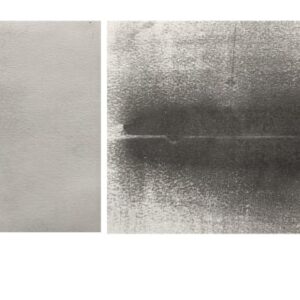Showing the single result

Born
20,02,1998
Education
Master of Fine Arts from Kala Bhavana, Visva Bharati University Santinikean 2020-2022.
Exhibition
Young Santiniketan Arts Exhibition at SSVAD,Santiniketan (2019).
Birla Academy of Art & Culture 54th Annual Exhibition 2021.
Final year degree show at kbexhibit.com 2020.
Participated in the exhibition for Sharing Makeshift Studio practices during the pandemic 2021 on www.kbexhibit.com.
Participated in an online exhibition by the Alternative Process Platform for the day of world pinhole photography. 2022.
Participated in the exhibition of 31st Ravi Jain Memorial Foundation Annual Awards 2022.
Award
31st Ravi Jain Memorial Foundation Annual Awards 2022, Dhoomimal gallery.
FICA Emerging Artists Award 2022.
Workshops
Participated in a miniature workshop organized by kalabhavana painting dept. 2019
Participated in a workshop of video making conducted by debraj naiya, 2021.
Artist Statement
My art practice primarily originated and evolved due to my fascination with the phenomenon of light, how it enables us to see and perceive things around ourselves.
From an early age I had developed an interest to understand the scientific reasoning behind how human sensory respirators help us to transit the visual information to
our brain, i.e. When we see something it means the photo-receptors in our eyes register the light bouncing off- or radiating from something, and the brain uses the
gathered information, analysis them hence making things visible. As a child out of curiosity I would often look at different sources of light, mostly at the Sun, which is
why I was often told to not look at the sun with bare eyes. After being exposed to a bright light I could experience an afterimage, whenever I closed my eyes, the visuals
of my surroundings appeared to be similar to that of a film negative, leading to an apocalyptic view. The aftermath of this experience was always similar to the previous
one where it consumed time in adjusting to a dimly illuminated environment after the exposure of my naked eyes to the bright light, this phenomenon is referred to as
dark adaptation. This habit gradually turned into an unconscious habit over a period of time, where I would directly stare at any source of light, primary or secondary.
During the initial stages of my academic art practice, I focused and studied upon the reflection of light upon different objects and objects. It is also worth noting that
light is a form of information, which can be “translated” through various mediums.
I use the transient light or natural play of light into my art practice. My perception of the dark room along with its technicalities and scientific setup was a space in which
alteration of light is attainable. The intervention of my camera came into existence when I consciously tried to trace the drawing of natural light through a device. The
structure of my darkroom space is ephemeral and is never in a final or fixated state. It is constantly being molded as per unforeseen circumstances and situational
demands. Usually, a space is specifically built with the primary objective of a darkroom. Through my practice I consciously challenge this notion and mold my darkroom
in accordance with the pre-existing space which has its distinct identity. This enabled me to relocate/ carry my darkroom,
While my practice revolves around alternative photography, I am also concerned about the performativity of the spaces I document and my negotiation to make my
living space into a studio. The process I have chosen for my artistic expression has a scientific background, requiring logical set ups to be executed. While making my
documentation of the outside world as well as my life I am encountering a constant shift in my practice, having to set up technical parameters such as “darkroom” and
red safelights in the space I am trying to document. Creating a juxtaposed situation where my own subject, as well as living space, becomes and negotiates with the toll
of my practice. To exemplify what I mean, due to the limitations of the pandemic, I have set up a small-scale but functional darkroom, under my bed. Complete with
lights and trays it becomes a space a storage and a dark room alternating between a functional and a practice-based space. This is the performativity of my art.
Constantly shifting spaces and coming to terms with architecture, spaces and material is an aspect I encounter often in my practice and thus makes it more
performative, as if I become a third person who is trying to document my two lives in a single space. This constant change of space
shift create my interest in how a studio can adopt to spaces as well as the angle of a traveling studio. The documentation, if I may be bold, is a result of sudden decisions depending on the urge of the
situation to shift and adopt, where living spaces beyond simple storage under the bed to convert a whole room with black paper and tapes to a functional darkroom.
This practice I feel also documents a kind of crisis, not only of my daily life but a clash of my shifts during this time period with the practicality of my methods. The
situation and space compel me to adapt to subtle and sudden changes through experimentation.

